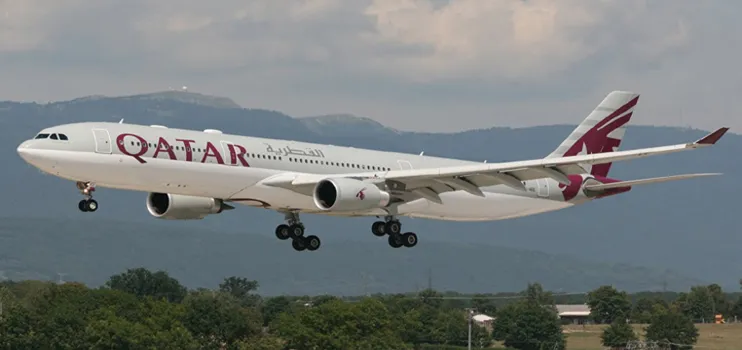
Middle Eastern Airline Safety on the rise
Nov 18, 2013

Middle Eastern airlines have seen a significant improvement in safety standards over recent years, driven by rigorous regulatory oversight, investment in modern aircraft technology, and enhanced training programs for staff. These airlines have adopted international safety protocols and best practices, leading to a decrease in accident rates. Collaborations with global aviation organizations and adherence to stringent maintenance schedules have further bolstered their safety records. As a result, many Middle Eastern carriers are now recognized for their commitment to passenger safety, earning trust and confidence from travelers worldwide. This upward trend reflects the region's dedication to ensuring a secure flying experience.
The aviation industry has witnessed remarkable advancements in safety over the past few years, particularly among Middle Eastern airlines. With an emphasis on stringent safety regulations, modern fleet upgrades, and enhanced training programs, these airlines are not only improving their operational standards but also gaining the trust of travelers worldwide. The following sections will explore the key factors contributing to the rise in safety among Middle Eastern airlines.
Stringent Safety Regulations
One of the primary reasons for the improvement in Middle Eastern airline safety is the implementation of stringent safety regulations. Regulatory bodies such as the International Civil Aviation Organization (ICAO) and the General Civil Aviation Authority (GCAA) in the UAE have set high standards that airlines must adhere to. These regulations ensure that airlines conduct regular safety audits, maintenance checks, and training sessions to keep their operations in line with international standards.
Modern Fleet Upgrades
Another significant factor contributing to the rise in safety is the modernization of airline fleets. Many Middle Eastern airlines have invested heavily in acquiring new aircraft equipped with the latest technology. For instance, airlines like Emirates and Qatar Airways have incorporated advanced safety features, such as enhanced navigation systems and improved fuel efficiency. These modern aircraft not only reduce the risk of accidents but also contribute to a more sustainable aviation environment.
Enhanced Training Programs
Training is a vital component of airline safety, and Middle Eastern airlines have made considerable investments in enhancing their training programs. Pilots and cabin crew undergo rigorous training that includes simulation exercises, emergency response drills, and continuous education on safety protocols. This commitment to training ensures that airline staff are well-prepared to handle various scenarios, significantly reducing the likelihood of accidents.
Investment in Safety Technologies
Middle Eastern airlines are also at the forefront of adopting cutting-edge safety technologies. Technologies such as predictive maintenance systems, real-time data analysis, and advanced weather forecasting tools have become integral to airline operations. These innovations allow airlines to identify potential issues before they escalate, thereby enhancing overall safety. Moreover, the integration of artificial intelligence and machine learning in operational procedures is paving the way for more efficient safety management systems.
Safety Records and Statistics
The safety records of Middle Eastern airlines reflect the positive outcomes of these initiatives. According to the latest data, the accident rate for Middle Eastern airlines has decreased significantly over the past decade. The following table illustrates the trend in safety records among major Middle Eastern airlines:
| Airline | Accident Rate (per million flights) | Year of Improvement |
|---|---|---|
| Emirates | 0.05 | 2022 |
| Qatar Airways | 0.04 | 2021 |
| Etihad Airways | 0.06 | 2022 |
| Saudia | 0.07 | 2023 |
Public Perception and Trust
As safety records improve, public perception of Middle Eastern airlines has also changed. Travelers are becoming increasingly aware of the safety measures that airlines are implementing, leading to a rise in trust and preference for these carriers. Airlines are actively promoting their safety records through marketing campaigns, which highlight their commitment to providing a safe travel experience. This shift in public perception is crucial for attracting more passengers, especially as competition in the aviation industry intensifies.
Conclusion
In summary, the rise in safety among Middle Eastern airlines can be attributed to a combination of stringent regulations, modern fleet upgrades, enhanced training programs, and the adoption of advanced technologies. As these airlines continue to prioritize safety, they not only improve their operational standards but also earn the trust of passengers globally. With a commitment to maintaining high safety levels, Middle Eastern airlines are well-positioned to play a significant role in the future of the aviation industry.
Overall, the advancements in safety among Middle Eastern airlines reflect a broader trend within the aviation sector, where safety is becoming a top priority. As travelers seek reliable and secure travel options, these airlines are poised to meet and exceed expectations, reinforcing their reputation as leaders in aviation safety.
Related Articles

Explore Thailand: The Best Islands to Visit for Paradise, Adventure, and Relaxation

The Ultimate Guide to the Best Islands in Thailand for Your Next Getaway

Do babies need passports? How to get a passport for a newborn

How to get a U.S. passport fast: here’s how to expedite the process

What is Mobile Passport Control: 5 reasons why you should use it

SENTRI vs. Global Entry: A detailed guide

Do you need a passport to go to the Bahamas? Let’s find out

Do you need a passport to go to Mexico? A detailed guide

Do you need a passport to go to Canada? We got the answer

Do You Need a Passport for a Cruise: An Essential Travel Guide

Booster Seat Requirements: All the Rules to Follow in Your Rental Car

What Are the World’s Most Powerful Passports, and How Does Yours Rank?

How to Take a Passport Photo at Home: A Helpful Guide

You've got to have heart! Southwest's new livery

Your opinion: Should water be free on low cost carriers?

Young women bolder than guys as solo travellers
